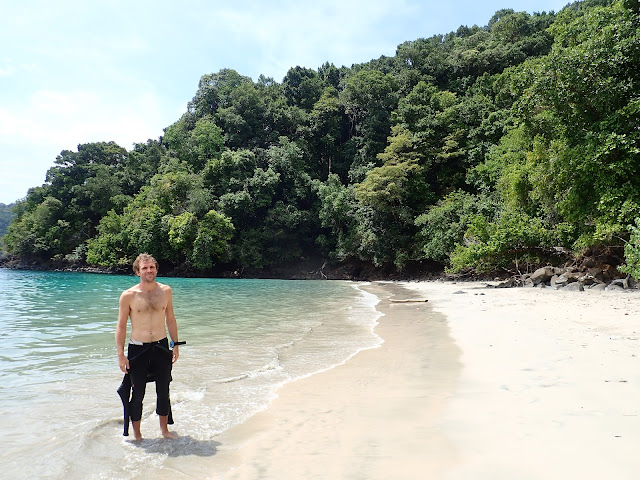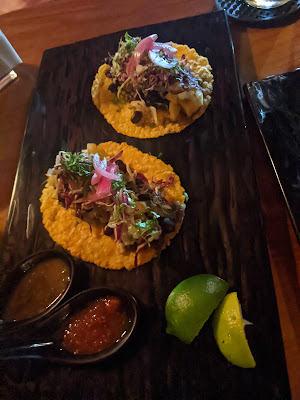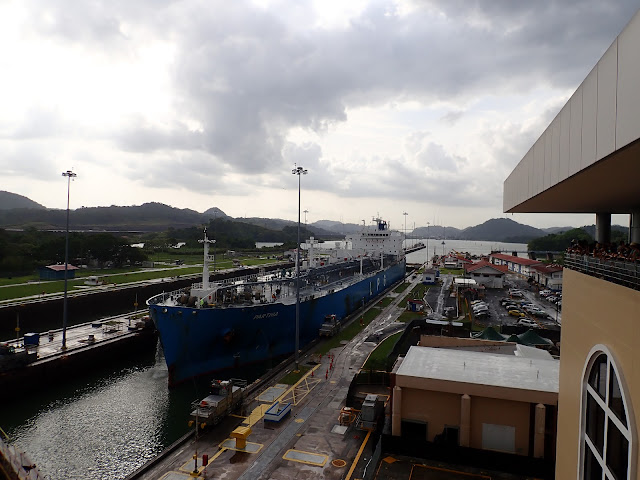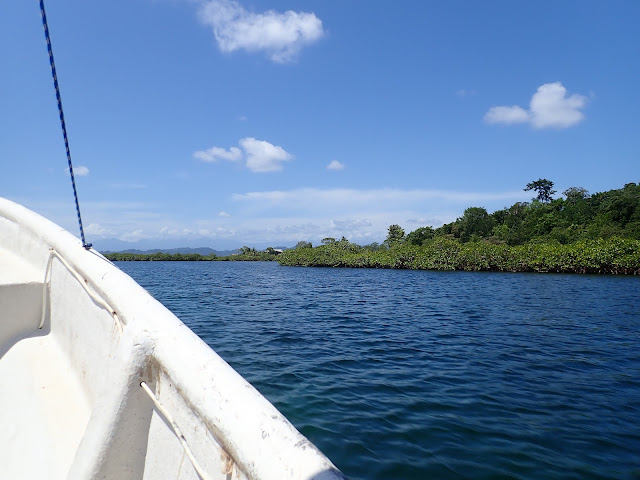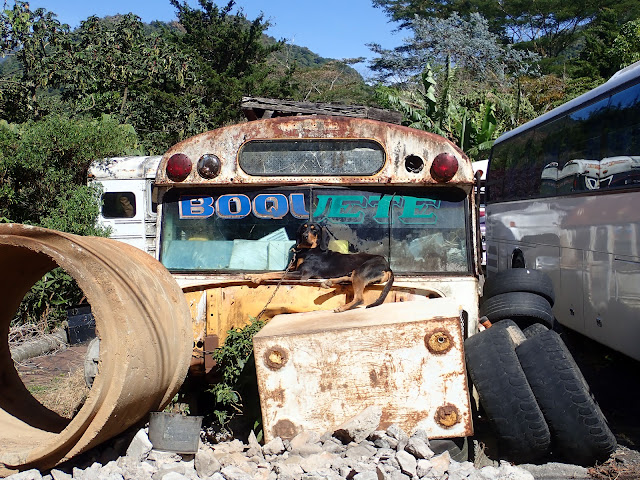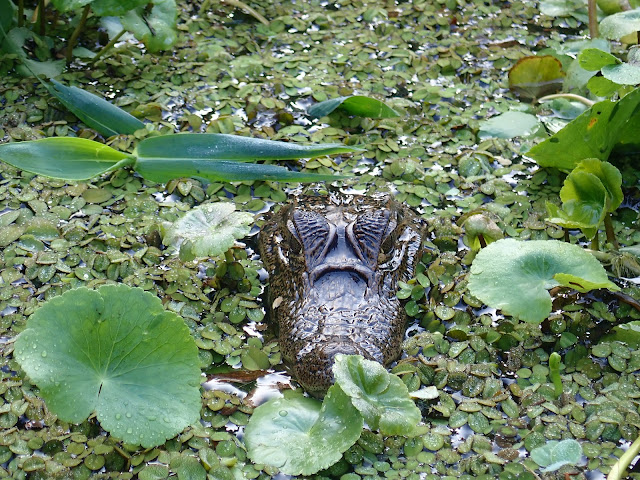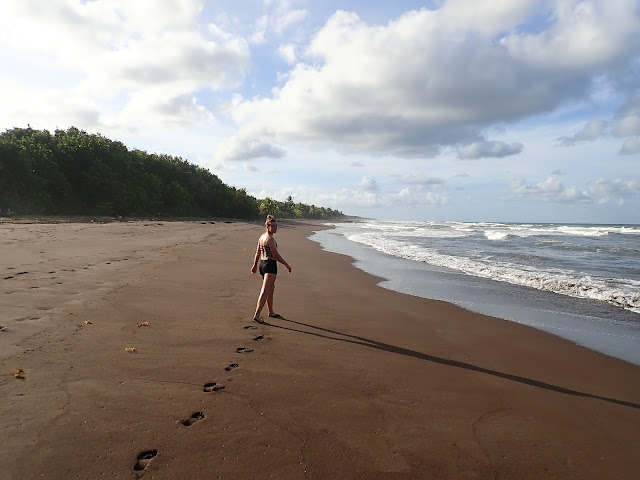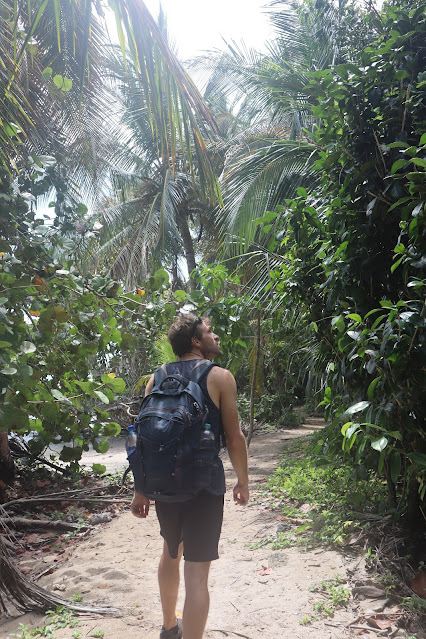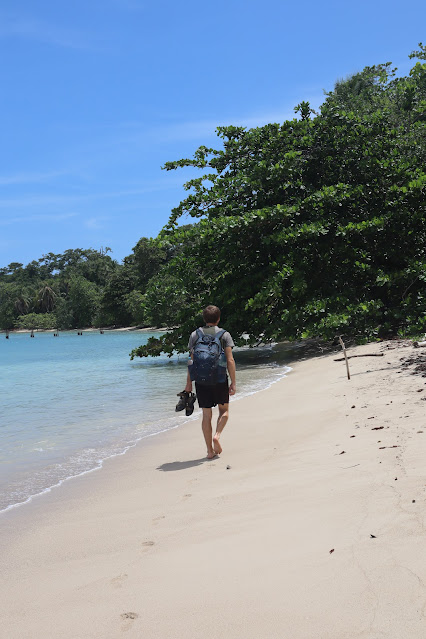After going for a lunch, we waited for the dive shop across the street to open, and then headed there to fill out forms and sort the details. We had originally booked only two days of diving, planning to have our third day just to chill on the beach, but after those two days we asked to extend for a third day of diving. Because it was really nice. While we again found ourselves in the "in-between" season where nothing was really in season (no whalesharks, no hammerheads...) we really enjoyed the diving here. We got to see a few different types of sting rays that we haven't seen before (some of them huge!), lots of white tip reef sharks, lots of octopuses, a few seahorses (!) also a kind we haven't seen before, some new types of "fluffy" nudi branchs, and LOTS of turtles. Unfortunately, we don't have any cool photos of these creatures as the underwater casing for our camera was leaking. You'll just have to imagine it.
A typical day scuba diving here would look something like this: early breakfast, head out on the boat around 8am, drive to first dive site (1-1,5 hours), then a break on one of the nearby beaches, second dive, longer lunch break on another beach, third dive, boat ride back, shower, snack, hammock time, dinner. And the best part was that these beaches were among the most beautiful we've seen on this trip - picture perfect paradise type beaches with palm trees, beautiful sand, crystal clear turquoise water...Spending a few days here was really amazing. And though we didn't see any of the big stuff we were kind of hoping for, we did get an acrobatic show by some dolphins our last day. Our very last dive unfortunately didn't turn out great - as we descended we ended up in a school of thousands of jellyfish - yes, the kind that sting! Not dangerous, but giving enough of a burn that it was quite uncomfortable swimming the first part of the dive. Once we got out of all the jellyfish, the current was too strong and in the end we had to cut the dive short. When we came back up on the boat, we all had very red lips and burning/itching hands from the stings. Well, it was an experience, as you say!
 |
| flying dolphin |
Our very last longer stay for this trip was El Valle de Antón, a small town surrounded by the ridges of a very, very old volcano. We picked this destination for our last top due to the proximity to Panama City and the fact that we would be there during part of Semana Santa, Easter week - we wanted to be close to the city to be able to get there easily even if there weren't any buses running during Easter (there were, but we weren't 100% sure). We stayed at a cozy hostel where we could take some free yoga classes (!) and where some of the volunteers hosted a Panamanian Easter dinner with traditional foods such as baked pumpkin, chicken rice, beetroot salad, and some banana-cheese-chocolate roll for dessert. We spent our days hiking (sometimes with a cute, fluffy private guide!), and afternoons reading.
This was also where I got to spend my birthday. I started the day with yoga, and then we went for a steep (but pretty) hike. The previous days we had lunch at a nice Colombian restaurant (with excellent arepas among other things) though on this day we went to a local place for a huge portion of arroz con camarones (shrimp rice), and then went for ice cream. In the afternoon, we went to some hot springs where you first started by doing a face mask with special mud - and then washed it off and enjoyed soaking in one of the (not super warm) pools. In the evening I had booked a table at probably the second fanciest restaurant in the area. The restaurant belonged to a hotel which was about 2km outside of the small village. We thought it might be very crowded since it was the Easter Friday, but when we came it was nearly empty and seemed to mainly be residents of the hotel eating. Although they unfortunately couldn't serve us any artisanal beer or nice cocktails due to the dry law (not being allowed to serve alcohol during Easter Friday), the food we had was really amazing: corn cobs, cheese fondue with patacones, grilled veggie salad, sweet potato tacos - and for dessert, sopapillos, some sort of fried dough filled with lemon cream and topped with chocolate sauce and cinnamon. Not a bad way to spend a birthday!

The next day we hopped on the bus(es) to the capital - Panama City. On the bus ride to the hotel we passed the bank district and watched the skyscrapers in gold and glass panels from the window. Not the most fancy hostel (our "private bathroom" was only private in the sense that we were the only ones using it - it wasn't actually situated in our room), but good enough for two nights. After a quick lunch we decided to take the long bus ride out to Miraflores, the famous spot for watching ships pass through the Panama Canal. Of course, this must be one of the main sights in the city, but we were still surprised to see the amount of tourists there. The actual museum part was closed when we were there, but for the $10 entrance we got to spend around 30minutes as a big ship was being transported through.
In the evening we managed to find a nice food truck selling burgers - our veggie burger had a patty made from rice, coconut and black beans! - and some nice local craft beers. Our last day, we went to Casco Viejo, or San Felipe, as it's also called, which is the old colonial quarters in the city and offering some cute, fancy coffee shops, monuments, and stalls selling souvenirs and Panama hats. We also got a nice view of the city skyline. We stumbled upon some Easter celebration outside of a church, and randomly ran into our friends Alex & Sarah, who we met in El Salvador (and in Honduras). We enjoyed a fancy coffee, had a pretty amazing lunch at the fish market - pescado de la hembra (breaded fish covered with shrimp in coconut sauce) with patacones, of course - and lastly, called an Uber to take us to the airport...
And this concludes our three and a half month backpacking trip through Central America!
Where to next?


